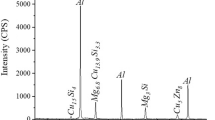Abstract
Wire electrical discharge machining is a widely used process in manufacturing industries to machine complex profiles. The performance of any machining process is based on choosing the right combination of input parameters. Metal removal rate and surface roughness are the most important output parameters, which decide the performance of a machining process. The selection of optimal parameters in wire electrical discharge machining is difficult as it is a complex process and involves a large number of variables. The present work models the metal removal rate and the surface roughness in terms of the input variables using the response surface methodology and, consequently, the developed mathematical models are utilized for optimization. Since the influences of machining parameters on the metal removal rate and the surface roughness are opposite, the problem is formulated as a multiobjective optimization problem. Non-dominated sorting genetic algorithm is then applied to obtain the Pareto-optimal set of solutions.
Similar content being viewed by others
References
Han F, Jiang J, Yu D (2006) Influence of machining parameters on surface roughness in finish cut of WEDM. Int J Adv Manuf Technol 34(5-6):538–546 doi:10.1007/s00170-006-0629-9
Rajurkar KP, Wang WM (1993) Thermal modeling and on-line monitoring of wire-EDM. J Mater Process Technol 38(1-2):417–430 doi:10.1016/0924-0136(93)90214-Q
Huang JT, Liao YS, Hsue WJ (1999) Determination of finish cutting operation number and machining parameters setting in wire electrical discharge machining. J Mater Process Technol 87:69–81 doi:10.1016/S0924-0136(98)00334-3
Rozenek M, Kozak J, DabroVwki L, LubkoVwki K (2001) Electrical discharge machining characteristics of metal matrix composites. J Mater Process Technol 109:367–370 doi:10.1016/S0924-0136(00)00823-2
Lok YK, Lee TC (1997) Processing of advanced ceramics using the wire-cut EDM process. J Mater Process Technol 63(1-3):839–843 doi:10.1016/S0924-0136(96)02735-5
Scott D, Boyina S, Rajurkar KP (1991) Analysis and optimization of parameter combinations in wire electrical discharge machining. Int J Prod Res 29(11):2189–2207 doi:10.1080/00207549108948078
Tarng YS, Ma SC, Chung LK (1995) Determination of optimal cutting parameters in wire electrical discharge machining. Int J Mach Tools Manuf 35:1693–1701 doi:10.1016/0890-6955(95)00019-T
Sarkar S, Mitra S, Bhattacharyya B (2006) Parametric optimization of wire electrical discharge machining of γ titanium aluminide alloy through an artificial neural network model. Int J Adv Manuf Technol 27:501–508 doi:10.1007/s00170-004-2203-7
Tsai KM, Wang PJ (2001) Predictions on surface finish in electrical discharge machining based upon neural network models. Int J Mach Tools Manuf 41:1385–1403 doi:10.1016/S0890-6955(01)00028-1
Spedding TA, Wang ZQ (1997) Study on modeling of wire EDM process. J Mater Process Technol 69:18–28 doi:10.1016/S0924-0136(96)00033-7
Liao YS, Huang JT, Su HC (1997) A study on the machining parameters optimization of wire electrical discharge machining. J Mater Process Technol 71:487–493 doi:10.1016/S0924-0136(97)00117-9
Manna A, Bhattacharyya B (2006) Taguchi and Gauss elimination method: A dual response approach for parametric optimization of CNC Wire cut EDM of PRAlSiCMMC. Int J Adv Manuf Technol 28:67–75 doi:10.1007/s00170-004-2331-0
Mahapatra SS, Amar Patnaik (2006) Parametric optimization of Wire Electrical Discharge Machining (WEDM) process using Taguchi method. J Braz Soc Mech Sci Eng XXVIII(4):422–429
Ramakrishnan R, Karunamoorthy L (2006) Multi response optimization of wire EDM operations using robust design of experiments. Int J Adv Manuf Technol 29:105–112 doi:10.1007/s00170-004-2496-6
Fonseca CM, Fleming PJ (1993) Genetic algorithms for multiobjective optimization: formulation, discussion, and generalization. In: Forest S (ed) Proceedings of the Fifth International Conference on Genetic Algorithms. Kaufmann, San Mateo, pp 416–423
Horn J, Nafploitis N, Goldberg DE (1994) A niched Pareto genetic algorithm for multiobjective optimization. In: Michalewicz Z (ed) Proceedings of the first IEEE Conference on Evolutionary Computation. IEEE, Piscataway, pp 82–87
Zitzler E, Thiele L (1998) Multiobjective optimization using evolutionary algorithms—a comparative case study. In: Eiben AE, Bäck T, Schoenauer M, Schwefel HP (eds) Parallel problem solving from nature. Springer, Berlin, pp 292–301
Srinivas N, Deb K (1994) Multiobjective function optimization using non-dominated sorting genetic algorithms. Evol Comput 2:221–248 doi:10.1162/evco.1994.2.3.221
Sardiñas RQ, Santana MR, Brindis EA (2006) Genetic algorithm-based multiobjective optimization of cutting parameters in turning processess. Eng Appl Artif Intell 19:127–133 doi:10.1016/j.engappai.2005.06.007
Box GEP, Wilson KB (1951) Experimental attainment of optimum conditions. J R Stat Soc [Ser A] 13:1–45
Hill WJ, Hunter WG (1966) A review of response surface methodology: a literature review. Technometrics 8:571–590 doi:10.2307/1266632
Montgomery DC (2001) Design and analysis of experiments. Wiley, Hoboken
Deb K (2001) Multiobjective optimization using evolutionary algorithms. Wiley, Hoboken
Minitab (2003) Software Version 14, User’s Guide, Technical Manual. Minitab, State College
Montgomery DC, Peck EA, Vining GG (2003) Introduction to linear regression analysis, 3rd edn. Wiley, New York
Author information
Authors and Affiliations
Corresponding author
Rights and permissions
About this article
Cite this article
Prasad, D.V.S.S.S.V., Gopala Krishna, A. Empirical modeling and optimization of wire electrical discharge machining. Int J Adv Manuf Technol 43, 914–925 (2009). https://doi.org/10.1007/s00170-008-1769-x
Received:
Accepted:
Published:
Issue Date:
DOI: https://doi.org/10.1007/s00170-008-1769-x




